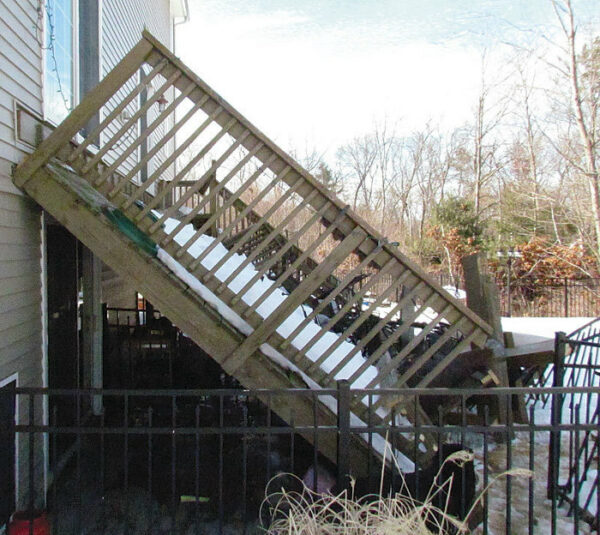How To Know When Your Deck Needs To Be Replaced
June 28th, 2022 | by James BaldwinIf you have an old or damaged deck, it might be unsafe and time to replace it. Learn how to identify the signs that your deck should be replaced vs. repaired.

Decks are designed to withstand harsh weather and bear a lot of weight. If your deck has seen its fair share of parties and paint jobs, it may be time to go a little further than a simple spruce-up.
But if your wood deck is more than 10 years old and showing signs of deterioration, building a new deck might be a safer — and ultimately more economical — option.
Maybe your deck is showing signs of cosmetic damage, like peeling paint or splintered edges. Seems easy enough to fix, but beware – some kinds of deterioration, if left unchecked, could eventually affect the deck’s structure. It’s better to know exactly what you should be looking for. The North American Deck and Railing Association (NADRA) offers a deck safety checklist that can guide you.
Check for Signs of Damage
Rusty screws, joists, or beams can pose a serious threat to the deck’s structural integrity, but one of the most common concerns we get from homeowners who are thinking about replacing their deck is wood rot.
Wood Rot
Even though we build our decks with 95% Trex materials, there are always going to be certain parts that are made with wood, such as the framing. With those posts in the ground there will always be the chance of rot, so you’ll want to keep an eye on those spots in particular. If you notice the wood becoming soft, that could likely be an indicator of decaying deck boards.
Using a screwdriver or chisel, penetrate ¼ – ½ inch of the wood surface. If it pierces easily, if you can break off a piece without splintering, or if the wood is soft and spongy, there is a good chance that decay may be present. When deck boards show advanced signs of decay, it’s likely that the rot or mildew has spread to other parts of the deck such as the posts in the railings. Though not a major component to the structural integrity of the deck, a shaky railing — whether due to rot or loose screws — poses a serious safety risk.
Pests
Wood-loving bugs like termites or carpenter bees can also cause significant damage very quickly to deck boards or frames. Pro tip: Trex composite decking won’t become food for these pests, and can add decades to the life of your deck without having to paint, sand, or stain!
Deck Board Deterioration
Wood deck boards tend to bow over time due to constant exposure to harsh weather conditions. Aside from being a tripping hazard or splinter risk, deck boards that are cracking or splitting could be a sign that your deck is losing its stability.

The Ledger Board
If your deck is attached to your house, it’s held in place with the ledger board. As the most important structural connection, if you notice issues with your ledger board that point to deterioration of any kind, your entire deck could be compromised.
Age
Even if you’ve meticulously maintained your deck for the last 30 years, no building material lasts forever. If your deck is more than 10-15 years old, it’s a good time to consider rebuilding simply based on the toll time has taken on it.
Replacing Your Deck
If you’ve gone through the checklist and your deck comes back with a clean bill of health, that’s great! Replacing the surface of your deck might be all you need to do for an updated look.
However, if your deck isn’t up to building code or isn’t structurally sound, rebuilding is the way to go and since the footings are underground, it can be difficult to get a clear picture of their true condition. Ultimately, we won’t advise you to sacrifice the safety of your family and friends to save a few bucks.
Another thing to remember is that composite material is heavier than pressure-treated wood. If you want to replace your wood deck boards with composite deck boards, know that your deck frame likely wasn’t built to withstand that weight. In this scenario, existing footings will likely need to be rebuilt, regardless of the shape they’re in.
How Much Will It Cost To Replace My Deck?
The cost of deck replacement will vary depending on your area, the existing structure, and the design, materials and finishes that you select for your new deck.
The upfront cost of a wood deck is going to be less than composite, but with it comes the annual sanding, staining, sealing, and years of maintenance to keep it up. Choosing higher-end and composite building materials from the start guarantees a lifetime of enjoying your own outdoor happy place, virtually maintenance-free.
Thinking about replacing your crumbling deck? Now’s the time! Contact Us today.